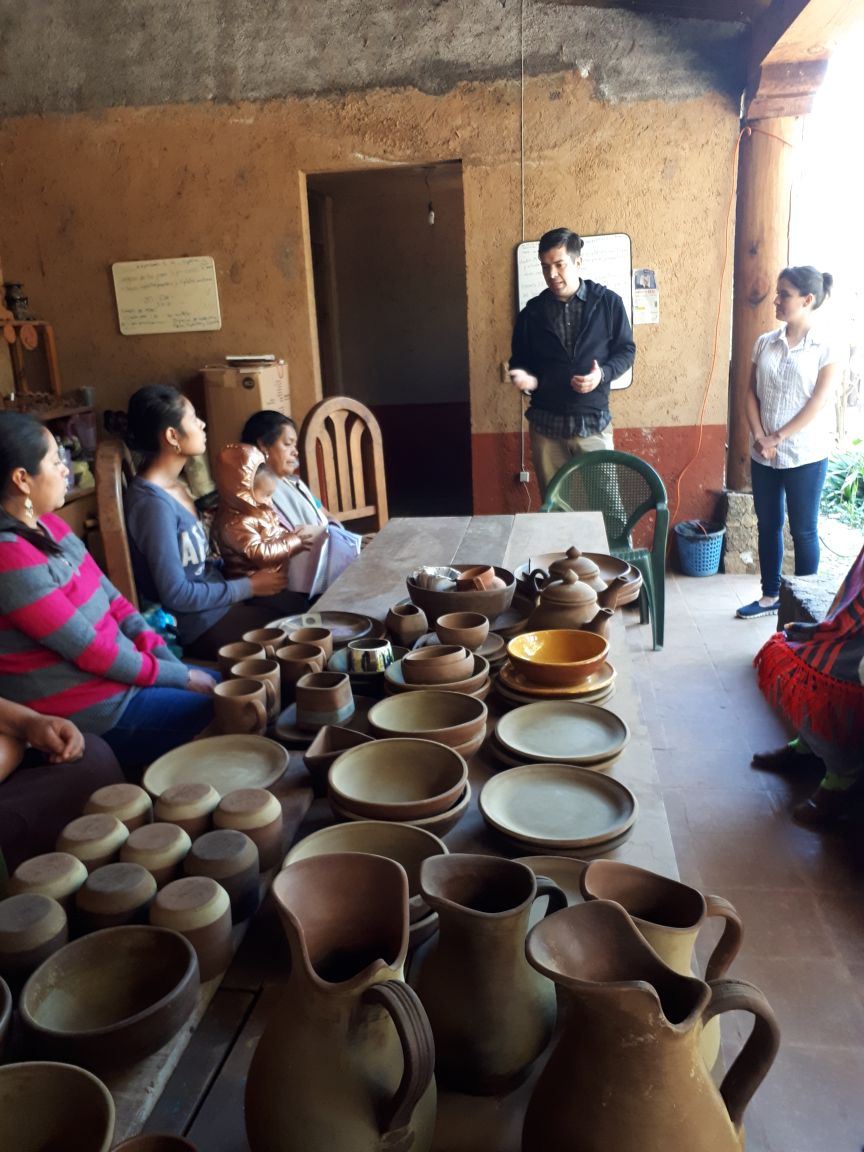
Pure Earth’s Daniel Estrada testing the yard of a home in Mexico for the presence of toxic lead.
What is the true scope of lead poisoning in Mexico? For the first time, we have a clearer picture, thanks to a health survey conducted by the National Institute of Public Health (INSP) in Mexico, documented in the report “National report of blood lead levels and use of glazed mud in vulnerable children.”
The results reveal that at least one million children between one and four years of age (representing 22% of the study population) have elevated blood lead levels above 5 μg/dL (Note: while there is no safe level of lead, the CDC recommends health intervention at levels of 5 μg/dL and above).
“It is important to realize that this figure will rise because this result covers ONLY children living in towns with less than 100,000 inhabitants. When data from other areas of the country are analyzed, the number of children confirmed with elevated blood lead levels will most certainly go beyond the one million mark,” says Daniel Estrada, head of Pure Earth Mexico and one of the co-authors of the report.
Survey Confirms Link Between Lead Poisoning and Pottery

Pure Earth’s Daniel Estrada talking to artisanal potters about the dangers of lead in Mexico
One of the key finding is that the main source of lead poisoning exposure in Mexico is lead-glazed traditional pottery that is used to cook and serve food in many homes and restaurants across the country.
The research found that frequent use of traditional lead-glazed pottery correlated to higher blood lead levels. Only 11% of study subjects who reported not using lead-glazed pottery had elevated blood lead levels, compared to 46% among those that reported frequent use.
This link between lead exposure and pottery was also reflected in regional data. The highest proportion of children with elevated blood lead levels (26% or 1 in 4) were found in the Southern regions of Mexico, where 40% of subjects reported using leaded pottery.
In comparison, 20.7% of children had elevated lead levels in the Central region, where 32% reported frequent use of leaded pottery; and 9.8% of children with high blood lead levels were found in the North, where reported leaded-pottery use was the lowest, at 21%.
“This just confirms our understanding of the magnitude of the child lead poisoning problem in Mexico, where we have found infants with extremely high levels of lead, even newborns like Baby X, who had a shocking 40 μg/dL of lead in his blood,” says Estrada. “We discovered that child in a 2015 study, also conducted with the INSP, of 300 mothers and their newborns in one state. This new survey involves thousands of children nationwide and will provide better insight into the problem and solutions.”
The results align with Pure Earth’s work in Mexico, which has focused on leaded pottery since 2009. Today, our Barro Aprobado program continues to train artisanal potters to go lead free, educate people about the dangers of lead in pottery, and promote the sale and use of lead-free pottery in restaurants and homes.
Lead Included for First Time In National Health Survey
This is the first time that blood lead level screening was included in the national health survey, conducted in its full format every six years in Mexico.
Pure Earth has been working with researchers in Mexico, including Dr. Martha María Téllez Rojo, a lead expert with INSP, for over a decade to call attention to the health impacts from lead-glazed pottery.
As Dr. Téllez Rojo points out: “We know that the harmful effects of lead exposure affect more populations where poverty and malnutrition converge, so it is urgent to develop a comprehensive strategy to reduce lead exposure in Mexico, and our results suggest that actions should be prioritized in the poorest communities in the central and southern regions of the country. ”
What’s Next
Authors of the survey recommend designing a multi-sectoral strategy to control lead exposure caused by leaded pottery with the participation of lead experts and officials across various government agencies, including health, labor, tourism and economic sectors. They also recommend creating a monitoring and surveillance system that identifies populations at risk and provides required care in a timely manner. Pure Earth’s Barro Aprobado work will continue to make an impact in this area.
Link to the paper or read the pdf.

Read more in the news:
- Un millón de niños en el país tiene altos niveles de plomo en la sangre, Jornada, Dec. 7, 2019
- Más de un millón de niños y niñas de México tienen niveles elevados de plomo en sangre, Gob.mx, Dec. 2019





